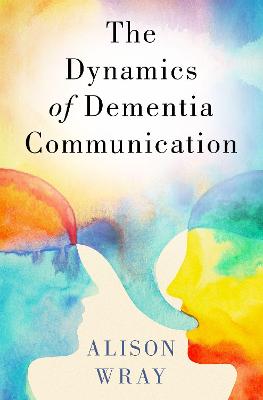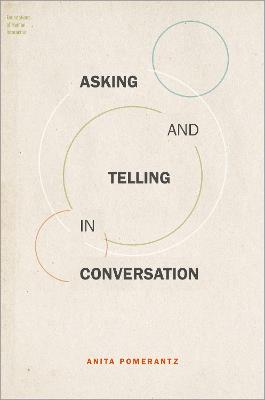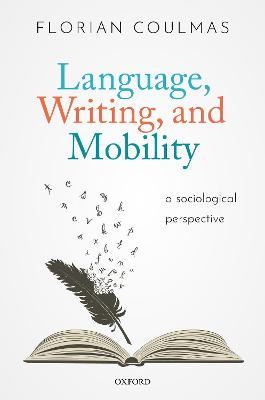Dynamics of Dementia Communication
 -10%
portes grátis
-10%
portes grátis
Dynamics of Dementia Communication
Wray, Alison
Oxford University Press Inc
07/2020
352
Dura
Inglês
9780190917807
15 a 20 dias
612
Should You Read This Book?
Summary of the Main Ideas in the Book
Is This Book for You?
How the Book Came About
PART ONE: CONTEXTS SHAPING COMMUNICATION
CHAPTER ONE: THE CHALLENGES OF COMMUNICATION IN THE DEMENTIA CONTEXT
1.1 Why Is It Difficult to Sustain Effective Communication Practices in Dementia Interaction?
1.2 Overview of the Book
1.3 Key Concepts
1.3.1 Defining 'Dementia'
1.3.2 Defining 'Communication'
1.4 Core Orientations
1.4.1 Personhood
1.4.2 Recognising the Role of Ego
1.5 Concluding Remarks
CHAPTER TWO: THE BIOLOGICAL DETERMINANTS OF DEMENTIA COMMUNICATION
2.1 How Do the Brain Changes Associated with Diseases of Dementia Affect Communication?
2.2 Exploring the Language of People with Alzheimer's Disease
2.2.1 Overview of Alzheimer's Disease
2.2.2 The Impact of Alzheimer's Disease on Language
2.2.3 The Impact of Alzheimer's Disease on Pragmatic Capabilities
2.2.4 Language as a Marker of Future Alzheimer's Disease
2.3 Language and Communication in Fronto-temporal Lobar Degeneration
2.3.1 Overview of Fronto-temporal Lobar Degeneration
2.3.2 The Impact of Semantic Dementia on Communication
2.4 The Impact on Language and Communication of Other Dementias
2.5 Pinning Down 'Dementia Communication'
2.6 Variation in Susceptibility to Diseases of Dementia and Their Symptoms
2.6.1 Why Do the Brain Changes Affect People and Their Communication Differently?
2.6.2 Genetic Disposition to Diseases Causing Dementia
2.6.3 Environmental Factors
2.6.4 'Rementia' and Temporary Lucidity
2.6.5 Brain and Cognitive Reserve
2.7 Concluding Remarks
CHAPTER THREE: THE ROLE OF MEMORY IN COMMUNICATION
3.1 What Constraints on Communication are Imposed by Memory Deficits in Dementia?
3.2 Long-Term Memory
3.2.1 Declarative Memory
3.2.2 Implicit Memory
3.2.3 Emotional Memory
3.3 Short-Term and Working Memory
3.4 How We Bring Information Back to Mind
3.5 Memory Changes in Normal Aging and in Dementia
3.6 The Impact of Memory Impairment on Communication
3.7 A Deeper Look at Episodic Memory and Communication
3.7.1 Episodic Memory and Autonoetic Experience
3.7.2 The Unreliability of Episodic Memory
3.7.3 The Impact of Losing Reliable Episodic Memory
3.8 Concluding Remarks
CHAPTER FOUR: THE SOCIAL CONSTRUCTION OF DEMENTIA
4.1 How Do Social Attitudes and Contexts Shape How We Interact with People Living with a Dementia?
4.2 Social and Emotional Factors Exacerbating Dementia Symptoms
4.3 The Construction of Dementia as a Disease
4.3.1 The Medicalization of Age-related Degenerative Diseases
4.3.2 The Commodification of Dementia Research
4.3.3 Defining People by Test Results
4.3.4 Mild Cognitive Impairment and the Boundary with 'Normal Functioning'
4.3.5 How People Living with a Dementia are Treated
4.4 Dementia as a Social Burden
4.4.1 Western Attitudes to Dementia and Care
4.4.2 Alternative Perceptions of Dementia
4.5 The Protection Afforded by 'Social Reserve'
4.5.1 What is Social Reserve?
4.5.2 Social Reserve and Social Capital
4.6 Concluding Remarks
CHAPTER FIVE: THE EXPERIENCE OF DEMENTIA COMMUNICATION
5.1 How Do Constraints on Communication Shape the Experiences of People Living with a Dementia and Their Carers?
5.2 Communicating When You Have a Dementia
5.2.1 Communicating the Dementia Experience
5.2.2 What People Living with a Dementia Say They Need
5.3 How Family and Professional Carers Communicate with People Living with a Dementia
5.3.1 The Emotional Burdens that Carers Bring to an Interaction
5.3.2 The Expression of Carers' Emotional Burden
5.3.3 Interaction between Professional vs Family Carers
5.4 Conceptualising Emotional Reserve
5.5 Concluding Remarks
CHAPTER SIX: APPROACHES TO EFFECTIVE COMMUNICATION IN CARE
6.1 How Do Approaches to Care Attempt to Address Challenges in Communication?
6.2 Person-centred and Relationship-centred Care
6.3 How to Communicate Well with People Living with a Dementia
6.3.1 Communication Parameters in Care Approaches
6.3.2 Content
6.3.3 Presentation of Information
6.3.4 Pragmatics and Contextual Expectations
6.3.5 Delivery
6.3.6 Environment
6.3.7 Attention to the Person's Needs
6.3.8 Affective Orientation
6.3.9 Nonverbal Communication
6.3.10 Widening the Scope of Communication
6.4 Concluding Remarks
PART TWO: CONCEPTUALISING COMMUNICATION
CHAPTER SEVEN: COMMUNICATION PROCESSES
7.1 How Do We Achieve Impact through Communication?
7.2 Overview of the Communicative Impact Model
7.2.1 The Three Components
7.2.2 The Role of the Hearer
7.3 Exploring the Context Component
7.4 Exploring the Resources Component
7.5 Exploring the Processing Component
7.6 Matters Arising
7.6.1 The Dynamics of Three or More
7.6.2 How Can We Judge Our Communicative Impact?
7.6.3 Why Does CI Work? What's in It for the Hearer?
7.7 Concluding Remarks
CHAPTER EIGHT: CONCEPTUALISING COMMUNICATION
8.1 How is the Communicative Impact Model Theoretically Justified?
8.2 Humans' Drive to Create a Comfortable World
8.2.1 An Evolutionary Impetus
8.2.2 Humans' Priorities in Modifying their World
8.2.3 Altruism: Promoting the Well-being of Others
8.3 Pragmatic Theory and the Context Component
8.4 Getting What We Want
8.5 Knowing What to Say: the Use of Context
8.5.1 Defining 'Context'
8.5.2 Using Context for Communicative Impact
8.5.3 Building and Structuring Context through Schemas
8.6 Formulating Output
8.6.1 Navigating Explicitness
8.6.2 From Selection to Execution
8.7 Concluding Remarks
PART THREE: APPLICATIONS AND IMPLICATIONS
CHAPTER NINE: DRIVERS OF DISRUPTED COMMUNICATION
9.1 Why Is Dementia So Disruptive to Communication?
9.2 The Role of Context in Sustaining Effective Communication
9.2.1 Contextual Gaps as a Catalyst for Low Social and Emotional Reserve
9.2.2 Pronouns as a 'Case Study' of Context in Communication
9.3 Dementia Communication: Problems and Responses
9.4 Unintended Consequences of Meeting Problems with Solutions
9.5 Awkward Pragmatic Gaps
9.6 Insights from Second Language Interaction
9.7 Concluding Remarks
CHAPTER TEN: DIFFERENT IN DEGREE OR KIND? HOW PEOPLE LIVING WITH A DEMENTIA ARE POSITIONED
10.1 How Does the Conceptual Positioning of People Living with a Dementia Impact on Communication?
10.1.1 Exploring Degree and Kind
10.1.2 Manifestations of the Degree and Kind Perspectives
10.2 The Carers' Paradox
10.3 Deception in Dementia Interaction
10.3.1 Defining Deception
10.3.2 Nuances of Deception and Truth-telling
10.3.3 Arguments for and Against Deceiving People Living with a Dementia
10.3.4 Case Study: Specialized Early Care for Alzheimer's (SPECAL)
10.3.5 How Do Deceptive Practices Relate to Degree and Kind?
10.3.6 Unrealistic Expectations?
10.4 Reconceptualising Degree and Kind
10.5 Concluding Remarks
CHAPTER ELEVEN: AN AGENDA FOR IMPROVING COMMUNICATION IN THE DEMENTIA CONTEXT
11.1 What Are the Priorities for Improving Communication by and with People Living with Dementia?
11.1.1 Why We Communicate
11.1.2 How Dementia Disrupts Communication
11.1.3 Emotional and Social Reserve
11.1.4 Difference in Degree and Kind
11.1.5 Carers' Paradox and Awkward Pragmatic Gaps
11.2 What Do People Living with a Dementia Need from Their Interlocutors?
11.2.1 Opportunities for Communication
11.2.2 Real Communication
11.2.3 Communicative Support
11.2.4 Kindness and Compassion
11.2.5 Empowerment: Alternative Routes to Communicative Impact
11.2.6 Insight and Flexibility
11.2.7 Building Social and Emotional Reserve
11.2.8 Respect and Dignity
11.2.9 Navigating Truth and Deception
11.3 Towards Better Communication
11.3.1 Linking New Ideas to Existing Practice
11.3.2 Mapping Effective Practices for the Interlocutor as Hearer and Speaker
11.4 Kindness and the Communicative Agenda in Care
11.5 Concluding Remarks
REFERENCES
ENDNOTES
Should You Read This Book?
Summary of the Main Ideas in the Book
Is This Book for You?
How the Book Came About
PART ONE: CONTEXTS SHAPING COMMUNICATION
CHAPTER ONE: THE CHALLENGES OF COMMUNICATION IN THE DEMENTIA CONTEXT
1.1 Why Is It Difficult to Sustain Effective Communication Practices in Dementia Interaction?
1.2 Overview of the Book
1.3 Key Concepts
1.3.1 Defining 'Dementia'
1.3.2 Defining 'Communication'
1.4 Core Orientations
1.4.1 Personhood
1.4.2 Recognising the Role of Ego
1.5 Concluding Remarks
CHAPTER TWO: THE BIOLOGICAL DETERMINANTS OF DEMENTIA COMMUNICATION
2.1 How Do the Brain Changes Associated with Diseases of Dementia Affect Communication?
2.2 Exploring the Language of People with Alzheimer's Disease
2.2.1 Overview of Alzheimer's Disease
2.2.2 The Impact of Alzheimer's Disease on Language
2.2.3 The Impact of Alzheimer's Disease on Pragmatic Capabilities
2.2.4 Language as a Marker of Future Alzheimer's Disease
2.3 Language and Communication in Fronto-temporal Lobar Degeneration
2.3.1 Overview of Fronto-temporal Lobar Degeneration
2.3.2 The Impact of Semantic Dementia on Communication
2.4 The Impact on Language and Communication of Other Dementias
2.5 Pinning Down 'Dementia Communication'
2.6 Variation in Susceptibility to Diseases of Dementia and Their Symptoms
2.6.1 Why Do the Brain Changes Affect People and Their Communication Differently?
2.6.2 Genetic Disposition to Diseases Causing Dementia
2.6.3 Environmental Factors
2.6.4 'Rementia' and Temporary Lucidity
2.6.5 Brain and Cognitive Reserve
2.7 Concluding Remarks
CHAPTER THREE: THE ROLE OF MEMORY IN COMMUNICATION
3.1 What Constraints on Communication are Imposed by Memory Deficits in Dementia?
3.2 Long-Term Memory
3.2.1 Declarative Memory
3.2.2 Implicit Memory
3.2.3 Emotional Memory
3.3 Short-Term and Working Memory
3.4 How We Bring Information Back to Mind
3.5 Memory Changes in Normal Aging and in Dementia
3.6 The Impact of Memory Impairment on Communication
3.7 A Deeper Look at Episodic Memory and Communication
3.7.1 Episodic Memory and Autonoetic Experience
3.7.2 The Unreliability of Episodic Memory
3.7.3 The Impact of Losing Reliable Episodic Memory
3.8 Concluding Remarks
CHAPTER FOUR: THE SOCIAL CONSTRUCTION OF DEMENTIA
4.1 How Do Social Attitudes and Contexts Shape How We Interact with People Living with a Dementia?
4.2 Social and Emotional Factors Exacerbating Dementia Symptoms
4.3 The Construction of Dementia as a Disease
4.3.1 The Medicalization of Age-related Degenerative Diseases
4.3.2 The Commodification of Dementia Research
4.3.3 Defining People by Test Results
4.3.4 Mild Cognitive Impairment and the Boundary with 'Normal Functioning'
4.3.5 How People Living with a Dementia are Treated
4.4 Dementia as a Social Burden
4.4.1 Western Attitudes to Dementia and Care
4.4.2 Alternative Perceptions of Dementia
4.5 The Protection Afforded by 'Social Reserve'
4.5.1 What is Social Reserve?
4.5.2 Social Reserve and Social Capital
4.6 Concluding Remarks
CHAPTER FIVE: THE EXPERIENCE OF DEMENTIA COMMUNICATION
5.1 How Do Constraints on Communication Shape the Experiences of People Living with a Dementia and Their Carers?
5.2 Communicating When You Have a Dementia
5.2.1 Communicating the Dementia Experience
5.2.2 What People Living with a Dementia Say They Need
5.3 How Family and Professional Carers Communicate with People Living with a Dementia
5.3.1 The Emotional Burdens that Carers Bring to an Interaction
5.3.2 The Expression of Carers' Emotional Burden
5.3.3 Interaction between Professional vs Family Carers
5.4 Conceptualising Emotional Reserve
5.5 Concluding Remarks
CHAPTER SIX: APPROACHES TO EFFECTIVE COMMUNICATION IN CARE
6.1 How Do Approaches to Care Attempt to Address Challenges in Communication?
6.2 Person-centred and Relationship-centred Care
6.3 How to Communicate Well with People Living with a Dementia
6.3.1 Communication Parameters in Care Approaches
6.3.2 Content
6.3.3 Presentation of Information
6.3.4 Pragmatics and Contextual Expectations
6.3.5 Delivery
6.3.6 Environment
6.3.7 Attention to the Person's Needs
6.3.8 Affective Orientation
6.3.9 Nonverbal Communication
6.3.10 Widening the Scope of Communication
6.4 Concluding Remarks
PART TWO: CONCEPTUALISING COMMUNICATION
CHAPTER SEVEN: COMMUNICATION PROCESSES
7.1 How Do We Achieve Impact through Communication?
7.2 Overview of the Communicative Impact Model
7.2.1 The Three Components
7.2.2 The Role of the Hearer
7.3 Exploring the Context Component
7.4 Exploring the Resources Component
7.5 Exploring the Processing Component
7.6 Matters Arising
7.6.1 The Dynamics of Three or More
7.6.2 How Can We Judge Our Communicative Impact?
7.6.3 Why Does CI Work? What's in It for the Hearer?
7.7 Concluding Remarks
CHAPTER EIGHT: CONCEPTUALISING COMMUNICATION
8.1 How is the Communicative Impact Model Theoretically Justified?
8.2 Humans' Drive to Create a Comfortable World
8.2.1 An Evolutionary Impetus
8.2.2 Humans' Priorities in Modifying their World
8.2.3 Altruism: Promoting the Well-being of Others
8.3 Pragmatic Theory and the Context Component
8.4 Getting What We Want
8.5 Knowing What to Say: the Use of Context
8.5.1 Defining 'Context'
8.5.2 Using Context for Communicative Impact
8.5.3 Building and Structuring Context through Schemas
8.6 Formulating Output
8.6.1 Navigating Explicitness
8.6.2 From Selection to Execution
8.7 Concluding Remarks
PART THREE: APPLICATIONS AND IMPLICATIONS
CHAPTER NINE: DRIVERS OF DISRUPTED COMMUNICATION
9.1 Why Is Dementia So Disruptive to Communication?
9.2 The Role of Context in Sustaining Effective Communication
9.2.1 Contextual Gaps as a Catalyst for Low Social and Emotional Reserve
9.2.2 Pronouns as a 'Case Study' of Context in Communication
9.3 Dementia Communication: Problems and Responses
9.4 Unintended Consequences of Meeting Problems with Solutions
9.5 Awkward Pragmatic Gaps
9.6 Insights from Second Language Interaction
9.7 Concluding Remarks
CHAPTER TEN: DIFFERENT IN DEGREE OR KIND? HOW PEOPLE LIVING WITH A DEMENTIA ARE POSITIONED
10.1 How Does the Conceptual Positioning of People Living with a Dementia Impact on Communication?
10.1.1 Exploring Degree and Kind
10.1.2 Manifestations of the Degree and Kind Perspectives
10.2 The Carers' Paradox
10.3 Deception in Dementia Interaction
10.3.1 Defining Deception
10.3.2 Nuances of Deception and Truth-telling
10.3.3 Arguments for and Against Deceiving People Living with a Dementia
10.3.4 Case Study: Specialized Early Care for Alzheimer's (SPECAL)
10.3.5 How Do Deceptive Practices Relate to Degree and Kind?
10.3.6 Unrealistic Expectations?
10.4 Reconceptualising Degree and Kind
10.5 Concluding Remarks
CHAPTER ELEVEN: AN AGENDA FOR IMPROVING COMMUNICATION IN THE DEMENTIA CONTEXT
11.1 What Are the Priorities for Improving Communication by and with People Living with Dementia?
11.1.1 Why We Communicate
11.1.2 How Dementia Disrupts Communication
11.1.3 Emotional and Social Reserve
11.1.4 Difference in Degree and Kind
11.1.5 Carers' Paradox and Awkward Pragmatic Gaps
11.2 What Do People Living with a Dementia Need from Their Interlocutors?
11.2.1 Opportunities for Communication
11.2.2 Real Communication
11.2.3 Communicative Support
11.2.4 Kindness and Compassion
11.2.5 Empowerment: Alternative Routes to Communicative Impact
11.2.6 Insight and Flexibility
11.2.7 Building Social and Emotional Reserve
11.2.8 Respect and Dignity
11.2.9 Navigating Truth and Deception
11.3 Towards Better Communication
11.3.1 Linking New Ideas to Existing Practice
11.3.2 Mapping Effective Practices for the Interlocutor as Hearer and Speaker
11.4 Kindness and the Communicative Agenda in Care
11.5 Concluding Remarks
REFERENCES
ENDNOTES
















